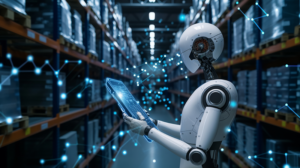Forecasting is a technique that uses historical data as inputs to make informed estimates that are predictive in determining the direction of future trends. Businesses utilize forecasting to determine how to allocate their budgets or plan for anticipated expenses for an upcoming period. This is typically based on the projected demand for the goods and services offered.
You can use forecasting to determine if events are affecting your company; such as sales expectations, and the increase or decrease in the price of raw materials. Forecasting also provides an important benchmark for firms that need a long-term perspective of operations.
You can use forecasting to size up the events that affect your company, such as sales expectations and raw material prices. Forecasting is also very useful if you need a long-term perspective on operations.
You can also use forecasting for broader trends, such as GDP development and unemployment over the course of the year. The more information you have at your disposal, the more reliable the forecast will be.
Logistics managers use forecasts a lot to analyze how possible changes will affect the company. For example, data can be collected on the impact on customer satisfaction by changing business hours, or on employee productivity by altering certain working conditions.
The advantage of supply chains with reliable forecasts
With forecasting by your side, the scheduling and planning process is vastly improved. Paying attention to the past and present demand for products allows supply chains to stay on top of the game.
Among the many reasons that forecasting is needed in supply chain management is being able to predict and plan for variations in demand. In a similar vein, planning for promotional activity and product launches are just as important and benefit greatly from demand forecasting. With data to back up predictions, there is less guesswork to fret over.
In a broader sense of the term, demand forecasting allows for the prediction of product demand in even the most specific of situations. While no company can predict the future with complete accuracy; relying on patterns and making informed decisions based on past and present data will get a company as close as possible.
Also is important to understand customer needs in product-focused industries. Being able to predict customer demand will result in fulfilling orders with short lead times on time. This will also have the effect of increasing trust between customers and suppliers.
A supply chain that takes advantage of forecasting does not need to have a full inventory, which saves time and space in the warehouse.
Supply and demand affect every aspect of the supply chain process. For example, being able to predict the demand for a certain product will allow supply chain managers time to ensure that enough workers are present to ship a certain amount of product. Not having enough workers results in orders not getting to customers on time. Likewise, having too many workers on the clock results in high labor costs.
How to achieve accurate forecasts
Can you precisely predict your demand? Can you collect all available data in your supply chain? A supply chain requires many systems and applications to work together in coordination, from warehouses to cargo tracking.
If all platforms work alone, your communication and data will be lost, so your forecasts are damaged and can get in your way rather than help you. Especially if you rely on manual processes and still record many documents on paper.
Grydd’s smart operating system eliminates all your silos in communication and integrates all your information in one place. This makes your forecasts much more powerful and reliable.
One solution
We know your problems and challenges because we dealt with them ourselves until we decided to transform the supply chain. It was precisely from this desire to change logistics worldwide that we developed our smart operating system.
We use state-of-the-art technology such as artificial intelligence and machine learning to understand market behavior. We have a multidisciplinary team of experts eager to help you. Click here and get a free sample.


















